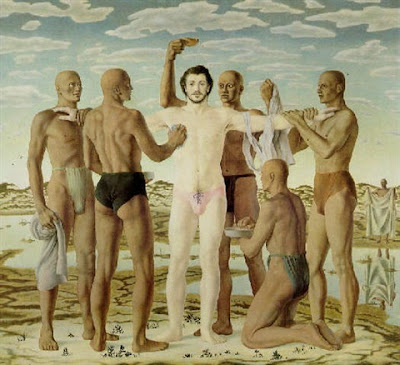Connor and Seal, Jee Leong Koh
Jee Leong Koh’s latest book feels like a work that
has been waiting to hatch for many years. It is a new departure, Koh has never
repeated a concept, but it is, at the same time, a book that brings to focus
two longstanding concerns. The first of these is poetic and the second of these
is personal.
Ever since Payday
Loans (2007), Koh has been asking a question about poetry: does a poet
learn best by inhabiting a set form or by wandering from one form to another? Is
life a contained house like Dickinson or an open road like Bishop? The toing
and froing can be seen in Payday Loans,
a sonnet series, Equal to the Earth (2009),
a variety of forms, then back to a series of ghazals in Seven Studies for a Self Portrait (2011). In Connor and Seal, the
two threads interweave: Part One adopts highly varied forms; Part 2 adheres to
a single form. The result is a book built from loose observations and tight
reflections. Taken together, the two parts make a blistering whole. The
narrative method glances in the direction of Rita Dove’s Thomas and Beulah (1986) in which two perspectives are given on a
relationship. Mirror faces mirror. And this new book follows on from Steep Tea (2015) where every poem responds towards a female muse.
The second concern relates to identity: how do
nationality, gay, and poet coalesce? It is suggested by one of the book’s reviewers
that Koh is a follower of Auden. If anything, Koh descends from Gunn’s
ancestral tree, for he, no less than Gunn, pursues a belief that a writer must
have the freedom to write formally or not, and only when a poet follows a
belief that the poem knows its form – the stone knows the form that the sculptor
imparts it (Pound) – can s/he have the scope to ask questions about self; and probe
the relation of that self, the inside, to society, the outside.
At the start of Connor
and Seal, a timeline is given. This stretches from 1983, the birth of Seal
in Jamaica to the death of Connor, in America, in 2066. The book is at once a
description of the past and a projection of life into the future – probably,
the most challenging aspect of the volume as the reader has to embrace a sexual
universe that is science fiction.
Part one of Connor
and Seal is filled with inventiveness, wit and emotion. “A Tale of Two
Cities, Three Maybe” is written with sing-a-long bravado:
She’s in
love with the boy.
She’s in love with the boy
but after a whole year of suckin’ boner
she knows she’s been conned by Conner.
“Ackee and Saltfish” is a layered lyric where every
syllable is weighed. And “Yellow Leaves (Turing)” is an original dialogue on
Shakespearean art between a human artist and an artificial intelligence
Part two of Connor
and Seal is written in sixty-two quatrains that approximate an ABBA
structure. Seal’s vision of life’s new order balances brutal honesty and
sensual frankness, one circling into the other like yin and yang. A surreal reality prevails:
the
cancer sun of the computer screen
bathes
now the dying flower of my face
the
indices fall in a coup de grace
or
fly up tempting the empyrean.
The sequence is pulled towards a gravitational
centre, the sexual release of an exhausted Seal, then spins off into an
apocalyptic climax. The backdrop for Connor and Seal is Harlem. A Harlem that has mutated beyond the gay
world of McKay, Barthè Hughes, Locke and
Cullen, into a symbol for America itself, a Harlem that Koh celebrates for its
rich diversity. A Harlem of the past, present, and future, a matrix into which Koh projects a relationship that crosses the fraught racial line and asks questions about race, gender, sexuality in Trump's repressive America and in the future.
Connor and Seal is a challenging and absorbing read, a daring publication by Sibling Rivalry Press, and a truly ambitious work by its author.




Comments